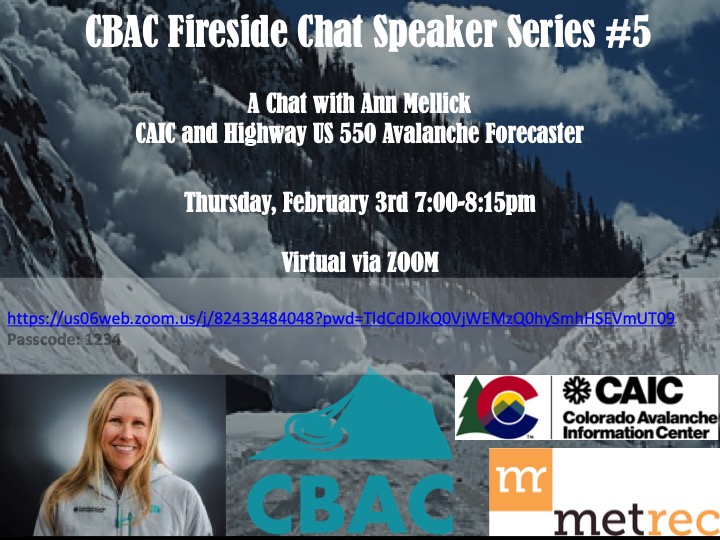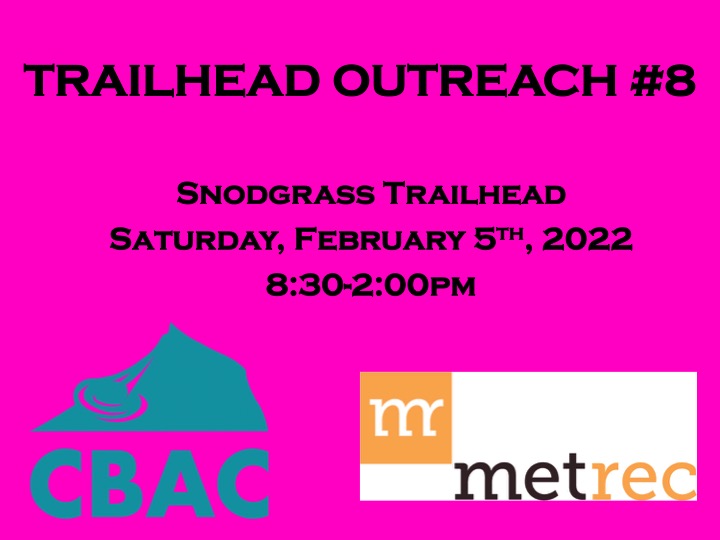Join us virtually with a regional guest Ann Mellick, seasoned highway avalanche forecaster for the famed Hwy 550 and Hwy 145 near Silverton, CO. An informal, conversational meeting with Ann talking about her career, stories, and life of a highway avalanche forecaster on one of the most notorious roads in the lower 48, if not North America. The CBAC Fireside Chat series has been made possible by support from the Gunnison County Met-Rec District, we cannot thank them enough for their generous support.
Zoom Link to Meeting HERE
Passcode: 1234
Recording of this Fireside Chat will be posted HERE following event.
Passcode for recording: AQ@Cu8!C


















